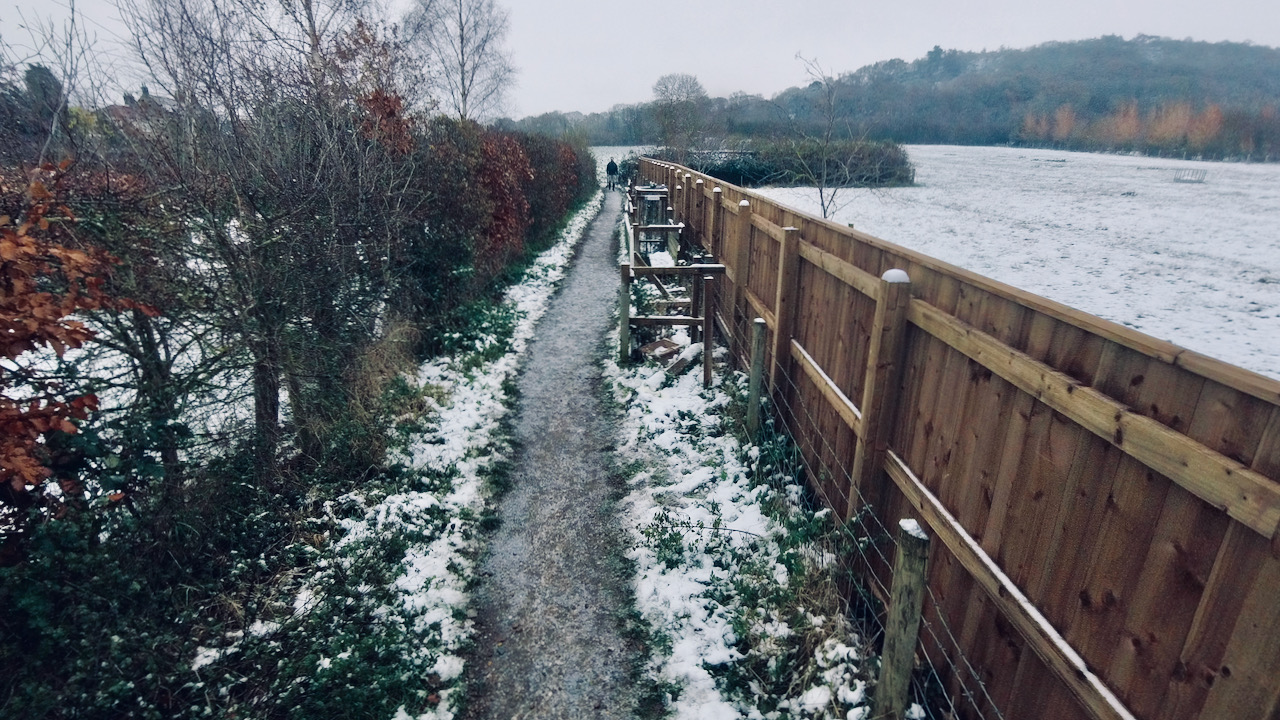On this rather dreich morning, I found myself compelled to focus my photographic endeavours closer to home.
When I first moved into the village, the scene before me would have been an open field stretching toward a gate nestled in the distant hedge. However, as time has gone by, the path has become enclosed by fences on either side. The left side saw parcels of land sold to homeowners whose properties abutted this modest triangle of pasture. Each of them diligently fortified their section of wire and post fencing with hedging. To the right, stock fencing was erected, and the field remained as pasture for sheep. The enclosed footpath boasted an acceptable width of at least 1½ meters.
During the agonies of Covid, a commemorative bench and a pair of rather haphazard wooden enclosures for trees were put up, severely limiting the path’s width. I distinctly recall the consternation this caused when we were required to maintain the two-metre separation, especially when the owner was sitting on the bench.
Fast forward to this autumn, and a towering six-foot wooden fence now stands alongside the stock fencing. The view over the open countryside to Captain Cook’s Monument, silhouetted by the morning sunrise while sheep grazed nonchalantly, has vanished.
It’s as if the landowner is not only bellowing, “Gerroff Moy Land!” but also insisting, “Don’t even steal a glimpse of it.”
This enclosing of footpaths does nark me. I understand the rationale behind a farmer’s wish to do so—to prevent Joe Public from straying over his fields. However, the pandemic underscored the importance of accessing our open spaces, not just physically but also reaping the mental benefits derived from gazing upon quiet, pastoral scenes.
Another footpath out of the village towards Roseberry Topping, through Hall Fields, was enclosed some years ago by a hedge that now encroaches upon the path’s width. In summer, it’s a jungle. Under wintry conditions, the constricted footpath transforms into a quagmire, almost impassable—certainly to be avoided unless clad in Wellingtons.
I have a PDF of a small booklet titled “The Rambler and the Law,” published in 1913 by the august sounding Peak District and Northern Counties’ Footpaths Preservation Society1Accessible online at http://www.peakandnorthern.org.uk/pnfs-publications/documents/TheRamblerandTheLaw.pdf. A fascinating little document. It mentions under “Ancient Highways”:
“Should a bridleway or footpath, etc., become ‘founderous’ (in such a bad condition that in certain places it is genuinely impassable—as when washed away by the erosive action of a stream or river), then a pedestrian has the right to walk on the adjacent land for the purpose of continuing his journey.”
What a splendid word “founderous” is—meaning miry or swampy.
Now, I’m uncertain if this right has been extinguished (or indeed if it ever existed in the first place). However, enclosing a footpath unequivocally inhibits any opportunity to circumnavigate a founderous section.
It could be argued that it is the landowner who is liable for maintaining the path’s surface, since the users no longer have the option to detour. Maybe it’s time to write to the Parish Council.
- 1

Leave a Reply